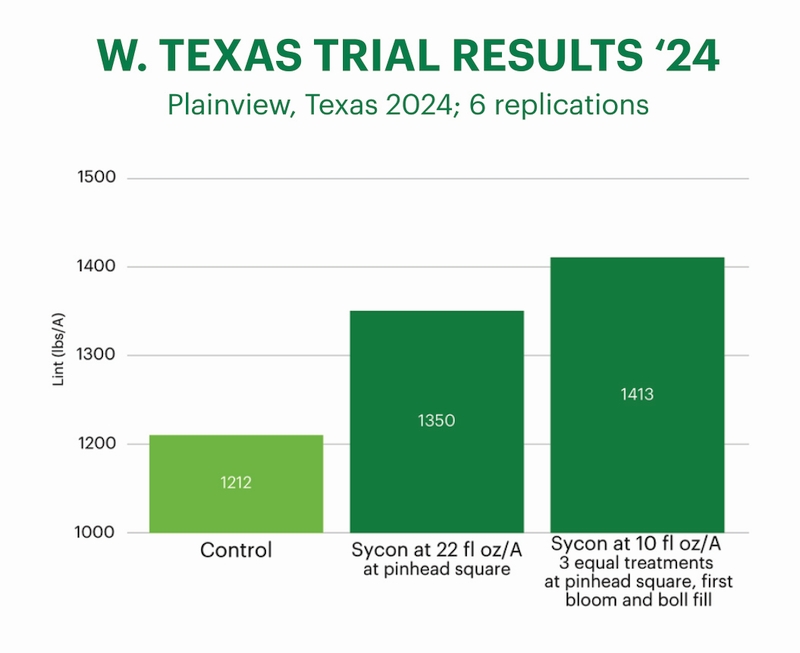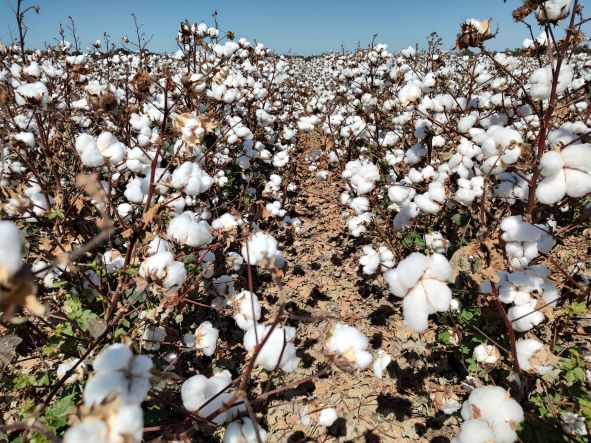Bollworm Emergence Causing Problems in East Texas Cotton
Cotton producers who planted Bt pest-resistant varieties in some parts of the state are seeing damage from bollworms, so vigilant monitoring and management may be necessary to prevent losses, said a Texas A&M AgriLife Extension Service expert.
Dr. David Kerns, AgriLife Extension integrated pest management state coordinator in College Station, said there has been a “huge” bollworm egg lay throughout much of the Upper Gulf Coast and central Blacklands areas. The bollworm in cotton, known as the earworm in corn and the headworm in sorghum, feed as larvae on cotton fruit and grain on corn and sorghum.
This pest represents one of the most damaging for Texas agricultural producers, Kerns said. Infestations are airborne, arriving with the migration of moths that lay eggs in the three crops. Over the last two weeks, large numbers of eggs have been spotted in cotton fields.
Kerns said the bollworms appeared to have moved into cotton primarily from the previous generation that had infested corn. It is thought the current bollworm generation has developed some resistance to some cotton Bt technologies by feeding on similar technologies in corn. Bacillus thuringiensis, referenced as Bt, is a spore-forming soil bacterium that produces protein crystals toxic to many types of insects.
“Bollworms have shown a lot of resistance the last few years, and they’re persisting this year,” Kerns said. “We’ve seen a lot of damage in fields that have Bt technology. All of the cotton Bt technologies had experienced some degree of failure, except for varieties containing Bt-Vip technology, which seems to be holding up very well.”
Bt cotton was genetically modified with resistance targeting tobacco budworm in 1996, Kerns said. Since then the primary pest of concern has shifted to the bollworm. Bt technology in cotton started with one toxin, then evolved to include two toxins and most recently three Bt toxins. The larvae that feed on the plant expressing the Bt die.
Current Bt in cotton is specific towards caterpillar pests and is harmless to beneficial insects, Kerns said.
But like many pests, the bollworms’ resistance to toxins has evolved as well, and the data demonstrates that bollworms have developed resistance to all the Bt toxins in cotton except the Vip toxin, he said.
Kerns said cotton varieties containing Vip technology also include two additional Bt Cry toxins, and the combination of these toxins appears to be working on bollworms.
“It appears that any variety with just two Cry toxins is having problems and those with the addition of Vip look good,” he said. “We’re seeing extensive damage in test plots, but cotton producers are aware of the problem and are treating cotton as needed to prevent yield loss.”
Kerns said dryland fields that received moisture bounced back well, but infestations could put yields in jeopardy if not properly managed.
Bollworm eggs typically hatch in three to four days, and the larval stage continues for almost two weeks, he said.
Most producers are monitoring for bollworm and staying on top of the situation in individual fields, Kerns said. But multiple egg lays mean producers in the area need to monitor, and producers in the northern Blacklands need to be watching their fields closely as moths produced from corn begin to emerge there.
Kerns said producers should not assume Bt cotton will prevent bollworm damage, and they should stay vigilant and note numbers, especially in non-Vip Bt cotton fields. Treatment of fields with insecticides early before the worms make their way to the fruit is the best tactic for optimal control. In areas where Bt resistance has been previously noted, spraying on large egg lay areas has proven highly effective.
But Kerns said treatment of Vip cotton varieties should be based solely on damaged fruit with larvae present because treating those fields in most often not necessary.
“In non-Vip cotton in areas where we have had Bt-resistance issues, if I have a large egg lay, I’m going to spray,” he said. “With Vip cotton, they tend to work, so you can avoid the added cost of spray treatments by just letting them do their job.”
However, even Vip cotton can experience unacceptable injury from bollworms under certain conditions, and should be treated once 6% or more fruit injury occurs with larvae present, he said.









